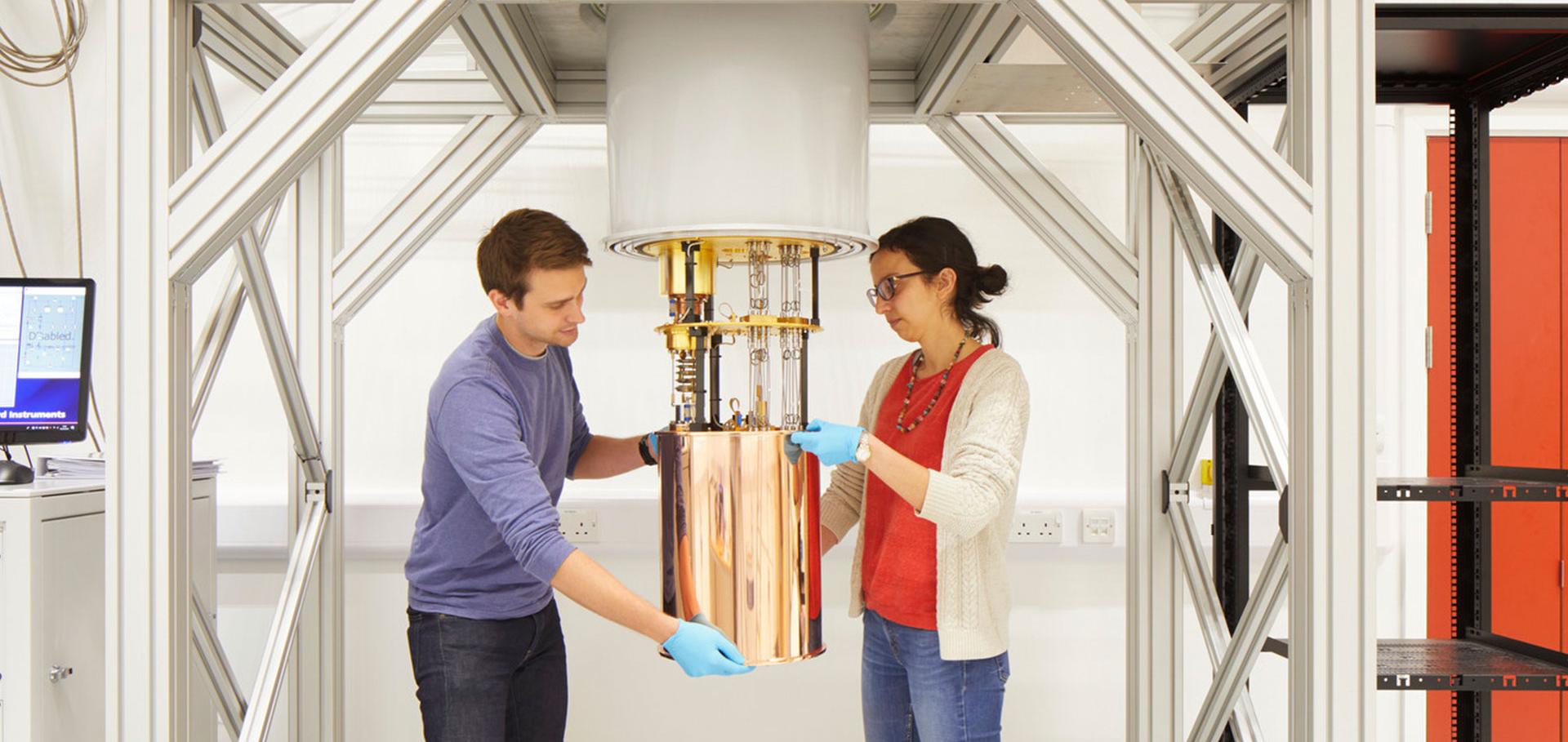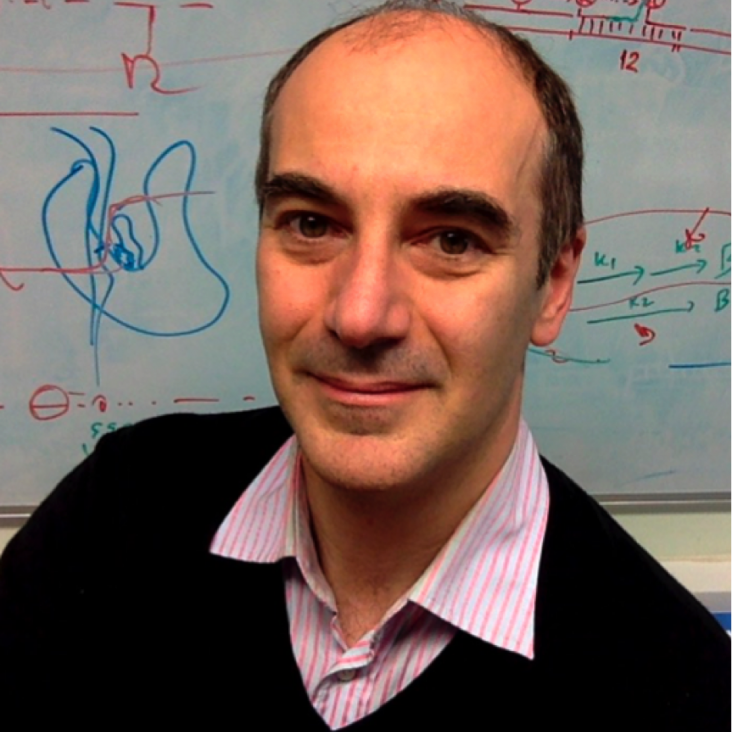Rotavirus mRNAS are released by transcript-specific channels in the double-layered viral capsid.
Proc Natl Acad Sci U S A 110:29 (2013) 12042-12047
Abstract:
Rotaviruses are the single most common cause of fatal and severe childhood diarrheal illness worldwide (>125 million cases annually). Rotavirus shares structural and functional features with many viruses, such as the presence of segmented double-stranded RNA genomes selectively and tightly packed with a conserved number of transcription complexes in icosahedral capsids. Nascent transcripts exit the capsid through 12 channels, but it is unknown whether these channels specialize in specific transcripts or simply act as general exit conduits; a detailed description of this process is needed for understanding viral replication and genomic organization. To this end, we developed a single molecule assay for capturing and identifying transcripts extruded from transcriptionally active viral particles. Our findings support a model in which each channel specializes in extruding transcripts of a specific segment that in turn is linked to a single transcription complex. Our approach can be extended to study other viruses and transcription systems.Multiscale spatial organization of RNA polymerase in Escherichia coli.
Biophys J 105:1 (2013) 172-181
Abstract:
Nucleic acid synthesis is spatially organized in many organisms. In bacteria, however, the spatial distribution of transcription remains obscure, owing largely to the diffraction limit of conventional light microscopy (200-300 nm). Here, we use photoactivated localization microscopy to localize individual molecules of RNA polymerase (RNAP) in Escherichia coli with a spatial resolution of ∼40 nm. In cells growing rapidly in nutrient-rich media, we find that RNAP is organized in 2-8 bands. The band number scaled directly with cell size (and so with the chromosome number), and bands often contained clusters of >70 tightly packed RNAPs (possibly engaged on one long ribosomal RNA operon of 6000 bp) and clusters of such clusters (perhaps reflecting a structure like the eukaryotic nucleolus where many different ribosomal RNA operons are transcribed). In nutrient-poor media, RNAPs were located in only 1-2 bands; within these bands, a disproportionate number of RNAPs were found in clusters containing ∼20-50 RNAPs. Apart from their importance for bacterial transcription, our studies pave the way for molecular-level analysis of several cellular processes at the nanometer scale.Single-molecule DNA repair in live bacteria.
Proc Natl Acad Sci U S A 110:20 (2013) 8063-8068
Abstract:
Cellular DNA damage is reversed by balanced repair pathways that avoid accumulation of toxic intermediates. Despite their importance, the organization of DNA repair pathways and the function of repair enzymes in vivo have remained unclear because of the inability to directly observe individual reactions in living cells. Here, we used photoactivation, localization, and tracking in live Escherichia coli to directly visualize single fluorescent labeled DNA polymerase I (Pol) and ligase (Lig) molecules searching for DNA gaps and nicks, performing transient reactions, and releasing their products. Our general approach provides enzymatic rates and copy numbers, substrate-search times, diffusion characteristics, and the spatial distribution of reaction sites, at the single-cell level, all in one measurement. Single repair events last 2.1 s (Pol) and 2.5 s (Lig), respectively. Pol and Lig activities increased fivefold over the basal level within minutes of DNA methylation damage; their rates were limited by upstream base excision repair pathway steps. Pol and Lig spent >80% of their time searching for free substrates, thereby minimizing both the number and lifetime of toxic repair intermediates. We integrated these single-molecule observations to generate a quantitative, systems-level description of a model repair pathway in vivo.The transcription bubble of the RNA polymerase-promoter open complex exhibits conformational heterogeneity and millisecond-scale dynamics: implications for transcription start-site selection.
J Mol Biol 425:5 (2013) 875-885
Abstract:
Bacterial transcription is initiated after RNA polymerase (RNAP) binds to promoter DNA, melts ~14 bp around the transcription start site and forms a single-stranded "transcription bubble" within a catalytically active RNAP-DNA open complex (RP(o)). There is significant flexibility in the transcription start site, which causes variable spacing between the promoter elements and the start site; this in turn causes differences in the length and sequence at the 5' end of RNA transcripts and can be important for gene regulation. The start-site variability also implies the presence of some flexibility in the positioning of the DNA relative to the RNAP active site in RP(o). The flexibility may occur in the positioning of the transcription bubble prior to RNA synthesis and may reflect bubble expansion ("scrunching") or bubble contraction ("unscrunching"). Here, we assess the presence of dynamic flexibility in RP(o) with single-molecule FRET (Förster resonance energy transfer). We obtain experimental evidence for dynamic flexibility in RP(o) using different FRET rulers and labeling positions. An analysis of FRET distributions of RP(o) using burst variance analysis reveals conformational fluctuations in RP(o) in the millisecond timescale. Further experiments using subsets of nucleotides and DNA mutations allowed us to reprogram the transcription start sites, in a way that can be described by repositioning of the single-stranded transcription bubble relative to the RNAP active site within RP(o). Our study marks the first experimental observation of conformational dynamics in the transcription bubble of RP(o) and indicates that DNA dynamics within the bubble affect the search for transcription start sites.The transcription bubble of the RNA polymerase-promoter open complex exhibits conformational heterogeneity and millisecond-scale dynamics: Implications for transcription start-site selection
Journal of Molecular Biology 425:5 (2013) 875-885


